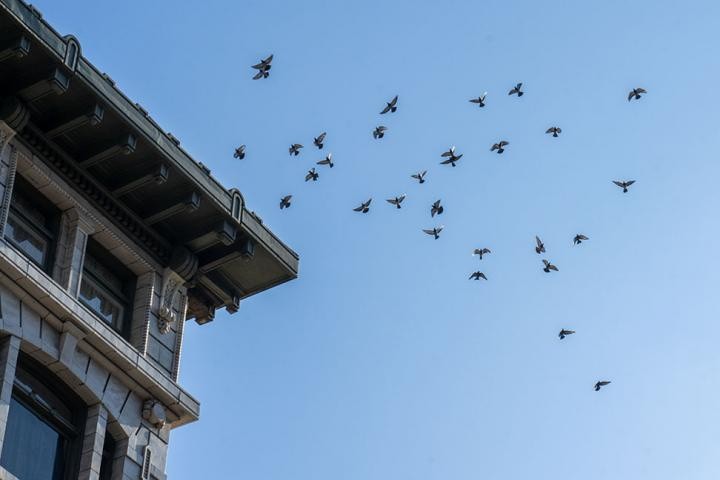A resident of Kawasaki City near the Todoroki Rokuchi tells Shukan Gendai that "about 4 p.m., a huge flock of inko, totaling around 2,000, assemble in the park" (Dec 11-18). "They roost on a tall gingko tree near the tennis court, and their high-pitched chirps are practically loud. It's horrible."

Inko is smaller than omu (parrots) and is frequently called "rose-ringed parakeets" in English.
Battling for Supremacy
The problem of wild parakeets in the sky over Tokyo is not new: it was first noted in a newsletter from the Audubon Society in 2014, but colonies of these birds have recently become out of control, according to the magazine.
"Even when compared to other invading bird species, a flock of 2,000 is noteworthy," naturalist Keiichi Hino says, "and unless steps are taken, they will probably continue to expand their range."
The jungle crow, which is both clever and aggressive, remains the forest's monarch. Shukan Gendai, on the other hand, believes things are heading toward a battle between the two kinds, which might have an influence on smaller local birds like sparrows.
Related Article : Native Australian Species Might Go Extinct if Invasive Species Problem Goes Unsolved
Wild Parakeets
While feral parakeets in Tokyo have striking lime green plumage, they are not mistaken with home-caged pet parakeets. For starters, they're much bigger, reaching a body length of up to 40cm. They have significantly bigger beaks and sharper vision than the pet type.
Even adult adults are hesitant to approach them.
They are most common in Tokyo's southwestern wards, such as Setagaya, Ota, and Meguro, but have lately expanded their ranges to include Nerima, Bunkyo, and other wards farther afield.
"Parakeets and crows like similar habitats," explains Shiro Kohshima, a Kyoto University's Wildlife Research Center professor.
While crows like to rummage through trash, parakeets prefer fruits and grains, notably rice cultivation. In India, though, similar breeds consume meat and fish.
Invasive Species
According to Hino, the parakeets, which are native to India and Sri Lanka, were introduced into Japan during the 1960s and 1970s when there was a surge in demand for exotic birds. A shipping mishap in 1969 resulted in the escape of 100 of the birds, which may live up to 20 years. These are thought to be the origins of the wild flocks that now swarm Tokyo's sky, and they have thrived in the absence of natural predators like owls and hawks.
A flock of 150 birds that had taken up home on the Tokyo Institute of Technology's Meguro Ward campus quickly grew to an estimated 1,500, and their noise and droppings were claimed to be a severe irritation.
Despite being an invasive species, Japan's wildlife protection laws protect the birds, making killing them illegal. Professor Kohshima reminded that the birds, which wreak havoc on agriculture in their native nations, have been classified as pests and may be exterminated.
"We're not aware of any instances of major damage," he adds, "but when and if that happens, Japan should follow suit."
During a visit to the Tokyo Institute of Technology campus, Kohshima described the "shocking" sight of crows assaulting and eating parakeets.
"I could see the bones and feathers of parakeets that had been picked clean by the crows on the rooftops of the school buildings," he recalled. "However, the parakeets are fighting back," Kohshima adds, "I've witnessed several hundred of them team up on an approaching crow."
Some parakeets, according to Hino, resemble hawks in that they swoop down on their prey from above, plunging at speeds of up to 70 km/h.
Also Read : Top 5 Most Destructive Invasive Species Today
For the most recent updates from the animal kingdom, don't forget to follow Nature World News!
© 2025 NatureWorldNews.com All rights reserved. Do not reproduce without permission.





